Infrared Thermometer Accuracy – how to check accuracy of infrared thermometer? : To test the accuracy of an infrared thermometer requires access to a stable surface of known temperature.
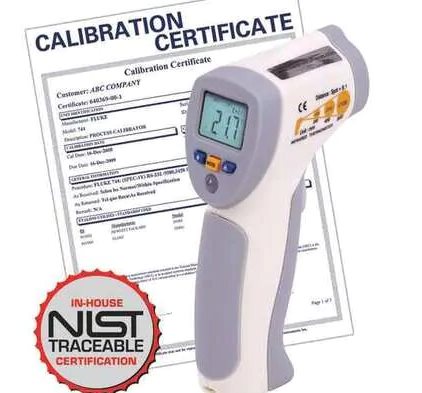
How do I know if my infrared thermometer is accurate?
Non-contact thermometer accuracy
Measurement of body temperature has become an essential diagnostic method for medical treatment. There are two traditional methods to measure body temperature.
Body temperature is an indication to express the health condition or pathological state.
- The first type is the glass mercury thermometer. This thermometer is inexpensive and easy to use. However, the response time is from 3 to 5 minutes. The glass material is extremely fragile and can be dangerous to the human body.
- The second type is the electronic digital thermometer. Its sensing element is made of a thermistor or resistance detector. This meter can measure the temperature within several seconds. However, the electronic device is affected by aging problems.
The sensing elements of a digital thermometer still need to have contact with the human body.
Can you take body temperature with an infrared thermometer?
Several problems exist in the clinical operation. The patient reaction, such as children or infants, could affect the measurement of these contact thermometers. The best method is to measure the core body temperature, such as the temperature of coronary arteries.
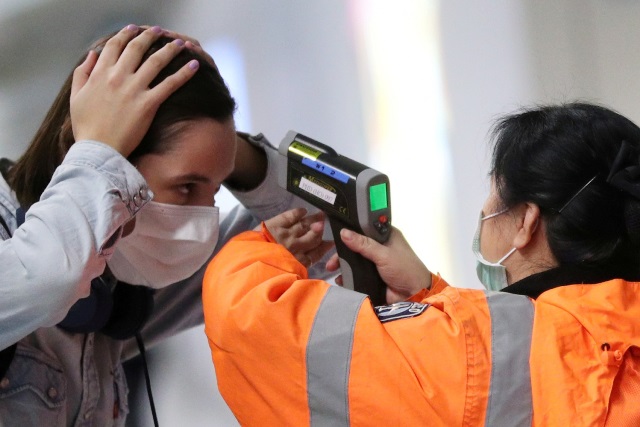
How to check infrared thermometer
The following simple instructions should help you perform a field check of an Infrared thermometer at moderate temperatures:
- The infrared thermometer should be at or near the room temperature where the test will be conducted. For example, if you just took the thermometer out of a hot or cold car, or you retrieved it from a cooler, or you are outdoors let it sit for 15-20 minutes at the new room temperature before performing the next precision test.
- Ensure that the lens or IR sensor is free of debris, grime, or condensation which can affect the accuracy of the reading. Use a soft cotton swab and alcohol to gently wipe it clean if needed. Avoid scratching the lens or sensor.
- Distance to Target Ratio: The Distance to Target Ratio is normally indicated on each thermometer or in the instructions. Example: For a 12:1 ratio, at a 12″ distance from the test object the target diameter being measured will be approximately 1″ diameter. Further in distance will increase the test area creating a larger diameter of surface area being tested. The temperature reading will be an average of the temperature in the target diameter.
Infrared thermometer test
Ice Water Test: Fill a glass with ice and add only enough water to fill the gaps between ice pieces. Allow the ice/water to rest for a minute or two. Stir a few times for uniformity. Hold the infrared thermometer directly over the top of the ice/water at a distance of about 3″.
- Make sure the lens is at a 90° angle and that the lens itself is centered over the ice/water per the illustrations shown here. If you aim at an angle, your field of view will include the walls of the glass or the background of the tabletop and your readings will not be accurate. If you perform the test correctly, and your IR thermometer is accurate, it should read approximately 32.0°F within the stated accuracy specification of your thermometer.
Infrared Comparator Cup: (fig C) This device allows you to compare the accuracy of an infrared thermometer to a calibrated immersion type thermometer at a temperature other than ice/water. Inside the machined aluminum cup is a flat surface with a solid matte black coating.
- The cup walls shield the surface from air currents in the room. The mass of the base provides for some stability in the temperature. Once inserted, the reference thermometer is allowed to stabilize for several minutes. The IR thermometer is then carefully pointed at the target inside the cup, using the same care as used with the ice/water test. The reading of the IR thermometer should match that of the reference thermometer within the stated specification.

Infrared thermometer testing
The Infrared Temperature Measurement System
Each body with a temperature above the absolute zero (-273.15°C = 0 Kelvin) emits electromagnetic radiation from its surface, which is proportional to its intrinsic temperature. A part of this so-called intrinsic radiation is infrared radiation, which can be used to measure a body’s temperature. This radiation penetrates the atmosphere.
With the help of a lens (input optics) the beams are focused on a detector element, which generates an electrical signal proportional to the radiation.
The signal is amplified and, using successive digital signal processing, is transformed into an output signal proportional to the object temperature. The measuring value may be shown in a display or released as an analog output signal, which supports an easy connection to control systems of process management.
Infrared thermometer advantage and disadvantage
The advantages of non-contact temperature measurement are clear – it supports:
- Temperature measurements of moving or overheated objects and of objects in hazardous surroundings
- Very fast response and exposure times
- Measurement without interreaction, no influence on the measuring object
- Non-destructive measurement
- Long-lasting measurement, no mechanical wear
How to check accuracy of infrared thermometer?
Measurement Preparation: How to Calibrate an Infrared Thermometer
Now that you know how to obtain prompt readings using a laser point thermometer, you need to focus on gaining more accuracy by way of calibrating it.
- Use infrared comparator cup- Simple to utilize yet inexpensive; the Comparator Cup helps you calibrate your laser point thermometer for temperature readings occurring more than once.
- Use an ice bath- This method resonates around factoring in a liquid’s boiling point when calibrating your infrared Thermometer. Variables such as elevation and air pressure can tamper with readings. Still, the surface of a well-tended ice bath should give you optimum zero degrees to attain the desired accuracy.
- Laboratory-based calibration- If you prefer to utilize more advanced means to calibrate your infrared Thermometer, perhaps you should consider using black bodies certified by Accuracy Standards worldwide. The good thing about black bodies is that they approximate non-existent ambient radiation and can give back a typical 0.95 emissivity value.
Infrared thermometer accuracy
To test the accuracy of an infrared thermometer requires access to a stable surface of known temperature. You cannot verify the accuracy of an IR thermometer by comparing it to an immersion type thermometer that is beneath the surface of a liquid or semi-solid in a non-controlled experiment.
To get heat readings from your target object, you have to know how to use an infrared thermometer with a laser pointer:
-Adjust the switch to your desired measurement unit.
-Turn on the temperature laser gun using its power button, if any.
-You can depress the trigger to obtain hidden temperature units.
-Aim the laser point towards the object from which you want to collect temperature readings.
-Stand as near as possible to the target object for pinpoint readings, unless you feel that it’s too dangerous for your health to get closer.
-Pull the trigger to get temperature readings from the infrared Thermometer’s digital display.
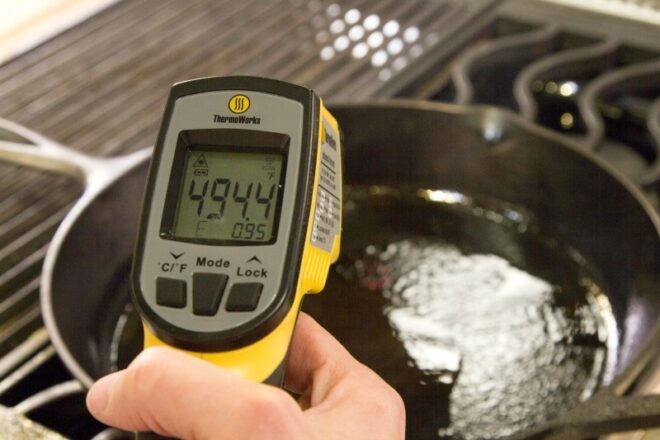
The most read
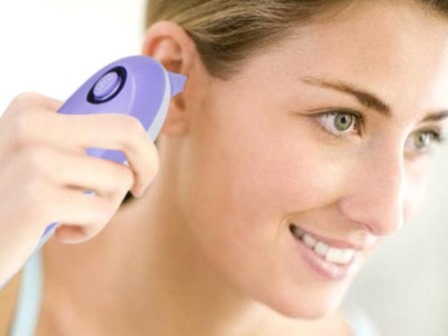
Infrared Thermometer for Humans
Infrared thermometers for humans allow users to measure body temperature quickly and non-invasively.

Most Accurate Thermometer
Thermometers are indispensable today.

How to use Infrared Thermometer on Humans?
Infrared thermometers can be used to measure human temperature, this can be done in a number of ways.

Can you use Infrared Thermometer on humans?
Yes, you can use a general-purpose medical infrared thermometer to measure human-forehead temperature.
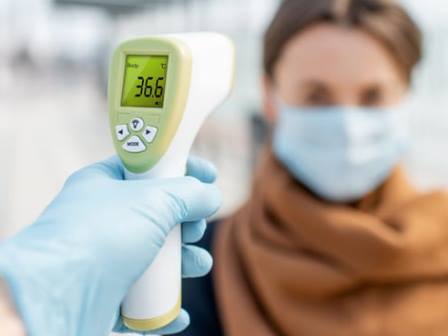
How Accurate are Infrared Thermometers?
Are infrared thermometers really accurate in detecting fever?
